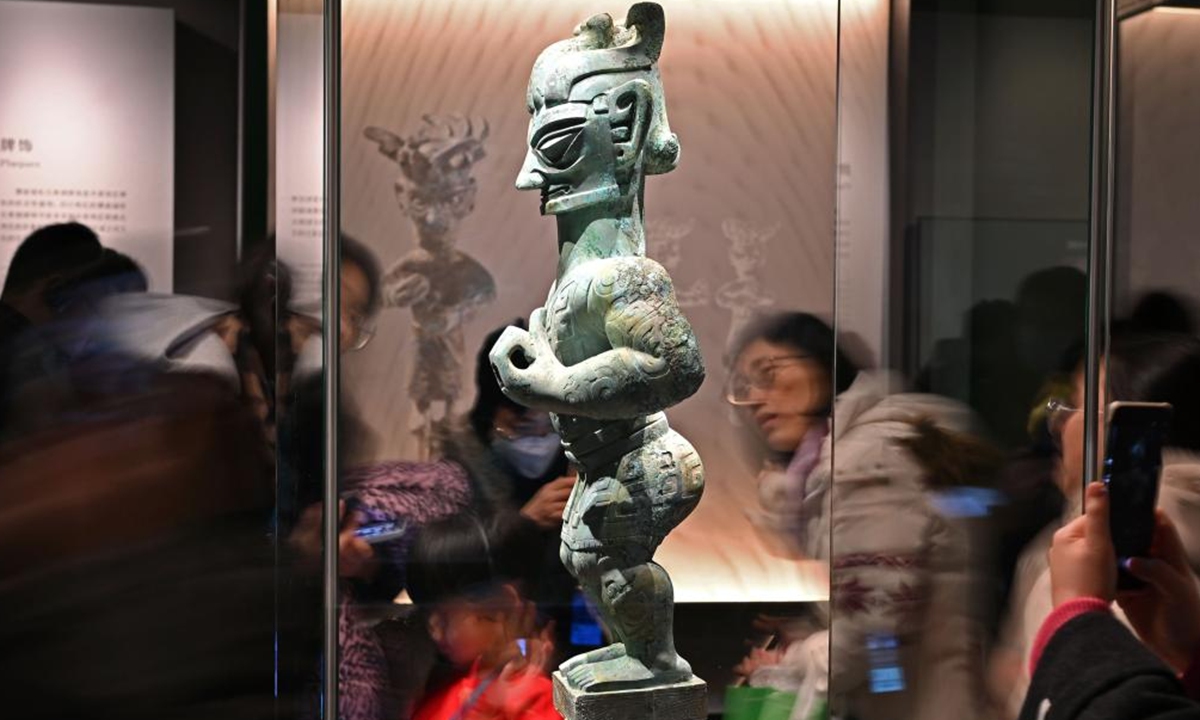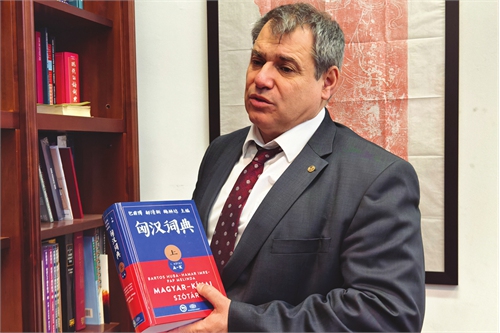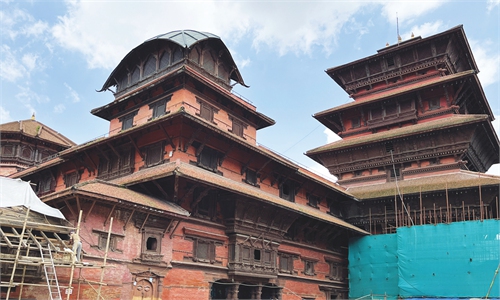ARTS / CULTURE & LEISURE
China aims to build world-class archaeological institutions
Ambitious goal to reach ‘batch’ levels by 2035

Visitors look at an exhibit during the exhibition of "Stars over China: The Ancient Shu Civilization of Sanxingdui and Jinsha" in Shanghai Museum, Shanghai, east China, Feb. 15, 2024. (Xinhua/Liu Ying)
Aimed at providing instruction on upgrading Chinese archaeological institutions into world-class facilities, a national manual was recently released by China's National Cultural Heritage Administration (NCHA) with the clear goal of having 10 to 15 Chinese institutions reach "world-leading" status by 2030.As to what defines a "world-class" archaeological institution, cultural policy expert Dou Saiming told the Global Times that "international research resources," "high-end research facilities," "good management frameworks," "ability to undertake niche and novel studies" as well as "a matrix of diverse experts" are all vital factors that should be incorporated.
The guidelines have set the ambitious goal of not only cultivating 10 to 15 world-class Chinese institutions by 2030, but also enlarging these numbers to a "batch" by 2035.
Cultural resource management expert Bei Jiekai told the Global Times that although the number of institutions included in this batch is uncertain and not "the most important" thing, he still expects to see research institutions attached to UNESCO world heritage sites like the Sanxingdui Ruins be selected.
The manual highlights "encouraging open collaboration" and "promoting Chinese civilization" as two important parameters for future world-class Chinese facilities. It indicates the country's archaeological sector should carry out global projects such as joint excavations with global teams, hosting international forums and publishing research overseas.
Under China-proposed Belt and Road Initiative (BRI), more than 40 joint excavation projects have been carried out with Chinese teams in more than 24 countries like Uzbekistan, Saudi Arabia and Vietnam over the past 10 years.
Through exchanges, China's archaeological specialties like rubbings have brought obscure texts on Saudi Arabian artifacts to life.
In Europe, France has always been an archaeological partner with China. In June 2023, a human distal phalanx fossil was discovered in Dordogne Province, France through China-France archaeological collaboration. Luc Doyon, the chief investigator of the project, told the Global Times that the collaborative excavation was of "significant importance to our understanding of humanity."
The manual also encourages Chinese institutions to value and participate in national-level archaeological projects that can better explain Chinese civilization to the world.
First proposed in 2001, the project to trace the origins of Chinese civilization is one of China's most comprehensive archaeological research projects as it includes numerous site studies like the Neolithic Liangzhu Ruin in Zhejiang Province and the Yinxu Ruins in Henan Province, where Shang Dynasty (c.1600BC-1046BC) oracle bones were discovered.
"Chinese history is continuous, and this characteristic is reflected in archaeological sites. Therefore, a top-notch Chinese institution should be able to introduce this characteristic of the country's civilization to the world," archaeologist Wang Meng told the Global Times.
Also in the manual, application requirements and criteria systems have been established for candidates. The NCHA will conduct an evaluation of China's archaeological institutions every three years and adjust its list of world-class institutions based on the results.
Prior to the 2024 manual, the notion of constructing world-class archaeological institutions in China was highlighted in a 2021 national-level circular that was released by the General Office of the State Council. The circular was dedicated to enhancing the protection of cultural relics and sci-tech innovation in relevant fields during the 14th Five-Year Plan period (2021-25).




